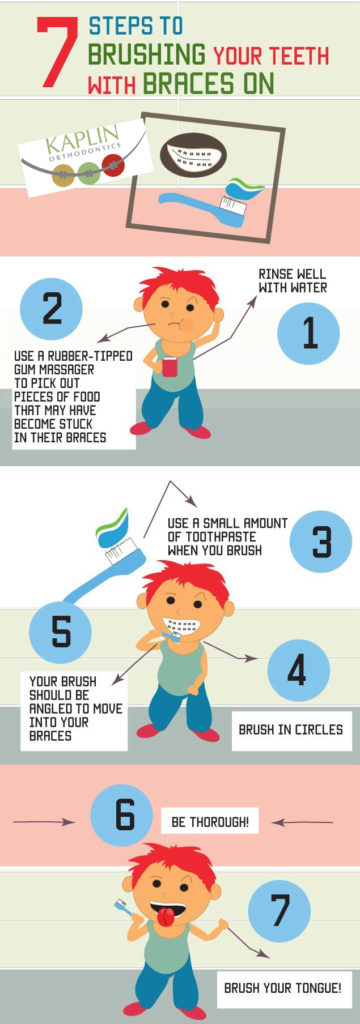Got braces? Then you need to brush. A lot!
What you do need is a good toothbrush you will actually use. A regular soft toothbrush works well. You can also use electric or sonic toothbrushes, such as a Sonicare or Oral-B Braun.
Another helpful tool is a small spiral dental brush (sometimes called an “interproximal brush” or a “proxy-brush”) that we give you when you get your braces on. You can find these over the counter at any pharmacy.
How Do You Brush Your Teeth With Braces On?
This is a multi-step process. First, you should cut your food into small pieces and thoroughly chew it. It will help you not only keep your braces out of trouble but also easier digest your food. After, rinse well with water.
When you brush, use a small amount of toothpaste and brush in circles. Your brush should be angled so it moves into your braces. Each tooth should receive individual attention. Finally, don’t forget to brush your tongue!
When you brush, that circular motion can be created by hand or by an electronic toothbrush that moves in a circle. It’s why electronic toothbrushes are so popular with people who have braces.
Small Toothbrushes for Braces
Ironically, the smaller the toothbrush, the better the cleaning. You don’t want a baby toothbrush, but a big one is worse.
A slim toothbrush is best. It allows you to get into the cracks between teeth and right into the gum line.
Best Toothbrush for Braces
The best toothbrush is the one you will use every day, at least twice a day. It takes about 3 to 5 minutes to thoroughly brush your teeth, no matter whether you use a manual or electronic toothbrush.
Dentists recommend using a soft brush and just brush longer.
The upside to manual toothbrush is that it is at a lower cost and is more portable.
Best Electronic Toothbrush for Braces
Superior cleaning and plaque removal are the top two features of electric toothbrushes. People often state they can brush more consistently and thoroughly with electronic brushes.
Electronic toothbrushes range from $49 to $500. Replacement parts can cost between $5 and $50. Using this type of toothbrush is a commitment.
Air Floss is an alternative to traditional flossing. It uses pressurized air to blast away debris and plaque. Many of the users state it’s easy to use and handle. Dentists think this is a good tool because the air itself causes little damage to gums.
Water Floss also provides plaque and food removal and gum stimulation.
Conclusion
There isn’t a best brush for braces, just a best brush for you.
Manual brushes equal electronic brushes for quality and thoroughness. More dentists recommend using a manual brush. Manual brushes are cheaper and easier to carry around with you.
Don’t dismiss the electronic brush, however. If ease of use is your goal, electronic brushes are better. It actually takes more work to learn how to use an electronic brush, but once learned brushing is easier.
All dentists agree: it’s the consistency and frequency that you brush that makes the difference.







